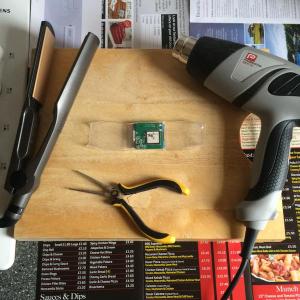Gannet research on Bass Rock
By Jude Lane on Friday, August 21st, 2015
The gannets of Bass Rock have a long history of being studied; the late Bryan Nelson dedicated years of his life to watching, recording and understanding their behaviour. To someone like me, Bryan’s book ‘The Gannet’ is pretty much the bible when it comes to these incredible birds. However, once they left the colony to go on foraging trips it was really anyone’s guess as to where each individual bird went.
Having said that, we did have some idea of where they might be going as people were also making observations from boats out at sea. These sightings told us that gannets were able to travel long distances and that they visit many different areas, but they still left many unanswerable questions such as 1) which colony had the birds had come from? 2) were they male or female? 3) were they breeding or non-breeding birds? 4) what were they doing? and so this is where technology has really opened up the science.
GPS devices, which use the same technology found in your cars’ sat nav, can now be fitted to seabirds to record their locations at regular time intervals throughout day and night. This allows us to map very accurately where an individual gannet has been and what it was doing whilst knowing where it was from, whether it is male or female, breeding or non-breeding etc.
Here you can see one of our GPS loggers being prepared for deployment. This particular logger is a very affordable off-the-shelf device that we’ve simply removed from its hard plastic casing to make it smaller, lighter and most importantly to make it waterproof by shrink-wrapping it in plastic. The hair straighteners are crucial to the operation allowing us to seal the ends of the shrink wrap! Once the ends have been trimmed to size, it’s ready to go on a gannet …




